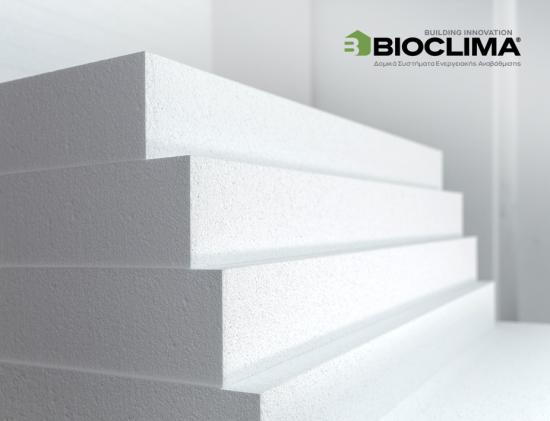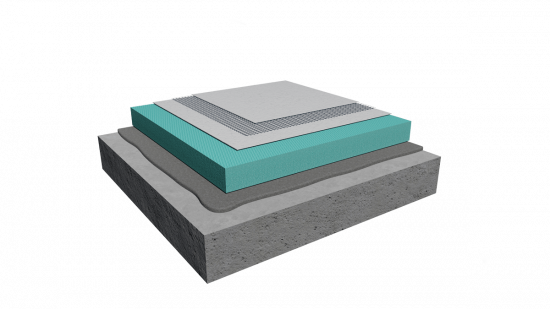Thermal Insulation Thickness – What You Need to Know

The thickness of the thermal insulation material in an external insulation system is not just a technical detail - it is the factor that determines how efficient and sustainable a building will be. Here lies a key element for low energy costs, as well as a sustainable home for many, many years.
The success of external thermal insulation, a technical intervention on a building's exterior walls, depends on certain factors (e.g., material specifications and application, contractor experience), to ensure the prevention of heat loss from the interior and the creation of a protective shield against weather conditions (cold, heatwaves) in practice.
One of these factors is the recommended (required) type and thickness of the thermal insulation material according to the KENAK study and passive fire protection, in order to create thermal comfort in the building’s interior.
Thermal Permeability and Thermal Insulation Thickness
Thermal Permeability Coefficient (U) is a unit of measurement that expresses the rate of heat transfer in Watts through a building element (e.g., a wall), meaning how much heat passes from the interior to the exterior (or vice versa) per square meter and per unit of temperature difference (W/m²K). The lower the thermal permeability value, the better the thermal performance and resistance of the element, bringing us closer to our target.
Thermal Permeability Coefficient, of course, depends on the type and thickness of the materials. For example, for a material with Thermal Conductivity Coefficient (λ) = 0.035 W/mK, the Thermal Permeability is approximately:
For 5 cm thickness, U ≈ 0.70 W/m²K
For 7 cm thickness, U ≈ 0.50 W/m²K
For 10 cm thickness, U ≈ 0.35 W/m²K
The λ (Thermal Conductivity Coefficient) = 0.035 W/mK was not chosen randomly. Both expanded and extruded polystyrene (popular insulation materials) move around this value. This value represents the amount of heat (in Watts) passing through opposite sides of a material one meter thick, when the temperature difference between the two surfaces is one Kelvin degree.
Another indicator worth keeping in mind is the Thermal Permeability Resistance Coefficient (R), which expresses the exact opposite of Thermal Permeability. It measures how difficult it is for heat to pass through the thermal insulation boards, and the higher its value, the better.
In any case, we see that as the insulation thickness increases, thermal permeability decreases and heat resistance increases. The key is to find the right balance so that our expenses are just what they should be - not less, not more. These values are indicative and are used to calculate a building's energy performance according to KENAK (Greek Energy Performance of Buildings Regulation) specifications.
Thermal Insulation Thickness
The thickness of insulation directly affects a building’s thermal performance, energy consumption, and overall operating cost. Each thickness choice has its advantages, depending on the needs and specifications of the construction.
What Thermal Insulation Thickness to Choose
Choosing the appropriate thermal insulation thickness is not the same for every building. It depends on a series of factors related to both the building’s energy profile and the local climate. Greece is divided into four climatic zones, each with its own maximum allowable Thermal Permeability coefficients.
The most important factors affecting the choice are:
- The climate of the area
- The building’s energy category according to KENAK
- Existing construction: For renovations of older buildings, thickness may be limited by the façade morphology, windows, or adjacent buildings, requiring specialized design.
Important factors in selecting an insulation material include: vapor permeability, flexibility, hardness, ease of application and handling, fire behavior, and potential soundproofing properties.
Therefore, the choice must be based on an energy study and KENAK guidelines, in combination with passive fire protection studies, to ensure both efficiency and long-term durability of the construction.
The correct choice of thickness is not a matter of luck but a combination of scientific data and proper planning. Here you can find a very useful Thermal Permeability (U) Calculator, which provides a clear picture of the performance of various insulation materials, also in relation to building materials.









